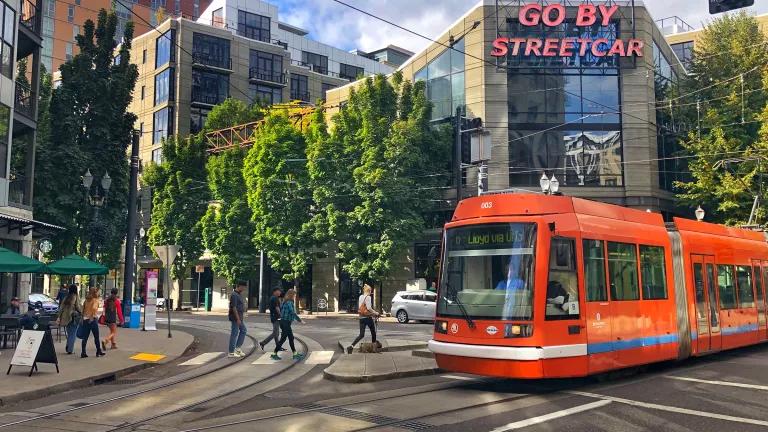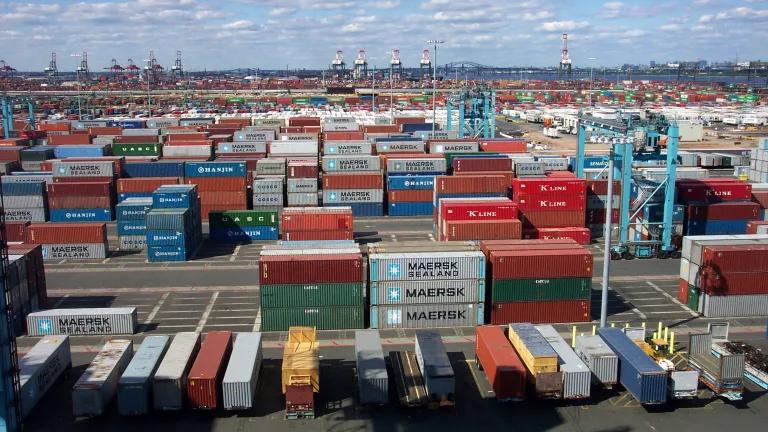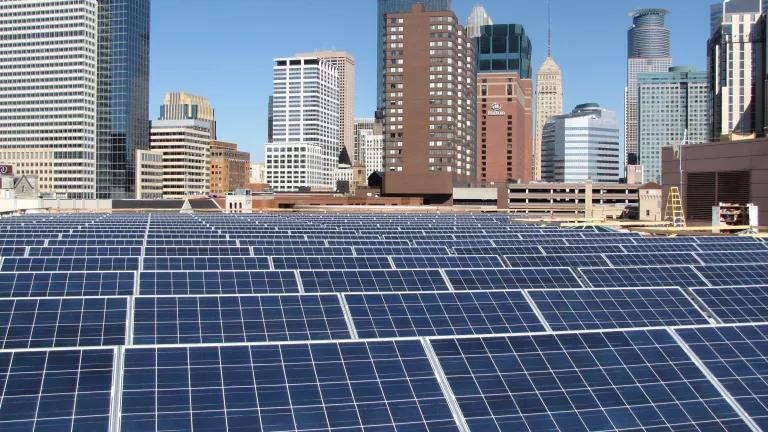Investing in a Clean, Just Transportation Future
While the Proposed federal budget simply fulfills the commitments made in the Bipartisan Infrastructure Law, it also delivers an enormous toolbox to deliver better mobility and access to low-income communities.

Marc A. Hermann/MTA
Secretary Pete Buttigieg shared the Department of Transportation (DOT) budget this week, one of the larger pieces of the overall federal budget proposed by President Biden. My colleague Alex Adams framed up that larger bid for investments in fiscal year 2023, and I want to tighten the focus on transportation here.
This budget largely fulfills the commitments in the Bipartisan Infrastructure Law (BIL) as enacted last November. It delivers a huge amount of funding, totaling about $142 billion (about $55 billion more than the pre-BIL level!). No surprise, the single-largest bucket of proposed spending is for highway accounts at $68.9 billion. However, it’s worth taking a look at what’s included. First, as I’ve pointed out before, the two largest highway accounts (the National Highway Performance and Surface Transportation Block Grant Programs) are not just for highway-building anymore. First of all, this money can be used to reduce or even eliminate backlogs in maintenance and repairs of our existing, extensive highway network. Second, over time, Congress has made the money flexible so that it is available for a variety of uses, including:
- Bicycle and pedestrian infrastructure;
- Transit, such as bus rapid transit and commuter rail;
- Electric vehicle charging infrastructure;
- Ferries;
- Traffic management; and
- Road safety improvements.
Additionally, there are highway accounts that aren’t really about building new roads at all. The new Carbon Reduction Program, for example, receives $1.3 billion and electric vehicle charging receives $1.4 billion of investments. Existing highway programs designed to benefit communities and the environment also get plussed-up, including the Congestion Mitigation and Air Quality Improvement (CMAQ) and Transportation Alternatives (TAP) Programs.
Complementing this record amount of “highway” funding, the DOT’s proposed budget also includes record investments in public transportation and intercity rail. Specifically, it includes $21.1 billion for transit, including $4.5 billion for Capital Investment Grants. This is a boost in what was formerly referred to as “New Starts,” since these grants are used to add new capacity to transit systems such as new rail, streetcar, or bus rapid transit lines. Cities and states can take advantage of this opportunity to expand into currently underserved areas, as the Washington, D.C., Metro system has done since its launch in 1976 (you can see the remarkable growth of the system in this cool slide show from Greater Greater Washington). And intercity rail, including Amtrak, receives an eye-popping $17.9 billion worth of investment, a big jump from pre-BIL.
This budget also includes more modest but important investments by DOT. For example, a Thriving Communities program launched in fiscal year 2022 with $25 million receives an additional $110.7 million to, as DOT describes, “provide technical assistance and capacity-building to help disadvantaged communities advance transformative, equitable, and climate-friendly infrastructure projects.” The budget even makes a commitment to delivering at least one such community-led project per state and territory, and it’s always good to see specific performance metrics!
Also included is $20 million for equity initiatives in the Office of the Secretary, including some specific and exciting new items:
- A National Equity Accelerator to “provide hands-on support to underserved and overburdened communities accessing DOT funds”; and
- “efforts to improve data collection and develop outcome measures, including completion of a National Transit Map to improve information on transit access.”
In sum, this budget simply fulfills the commitments made in the BIL, yet it also delivers an enormous toolbox that cities and states can and must use in partnership with DOT to deliver better mobility and access to low-income communities and Black and brown neighborhoods; to tackle the climate crisis that’s largely driven by car and truck tailpipe pollution; and to help reduce our perilous addiction to oil. I look forward to collaborating with allies and partners to make the most of these new tools.


